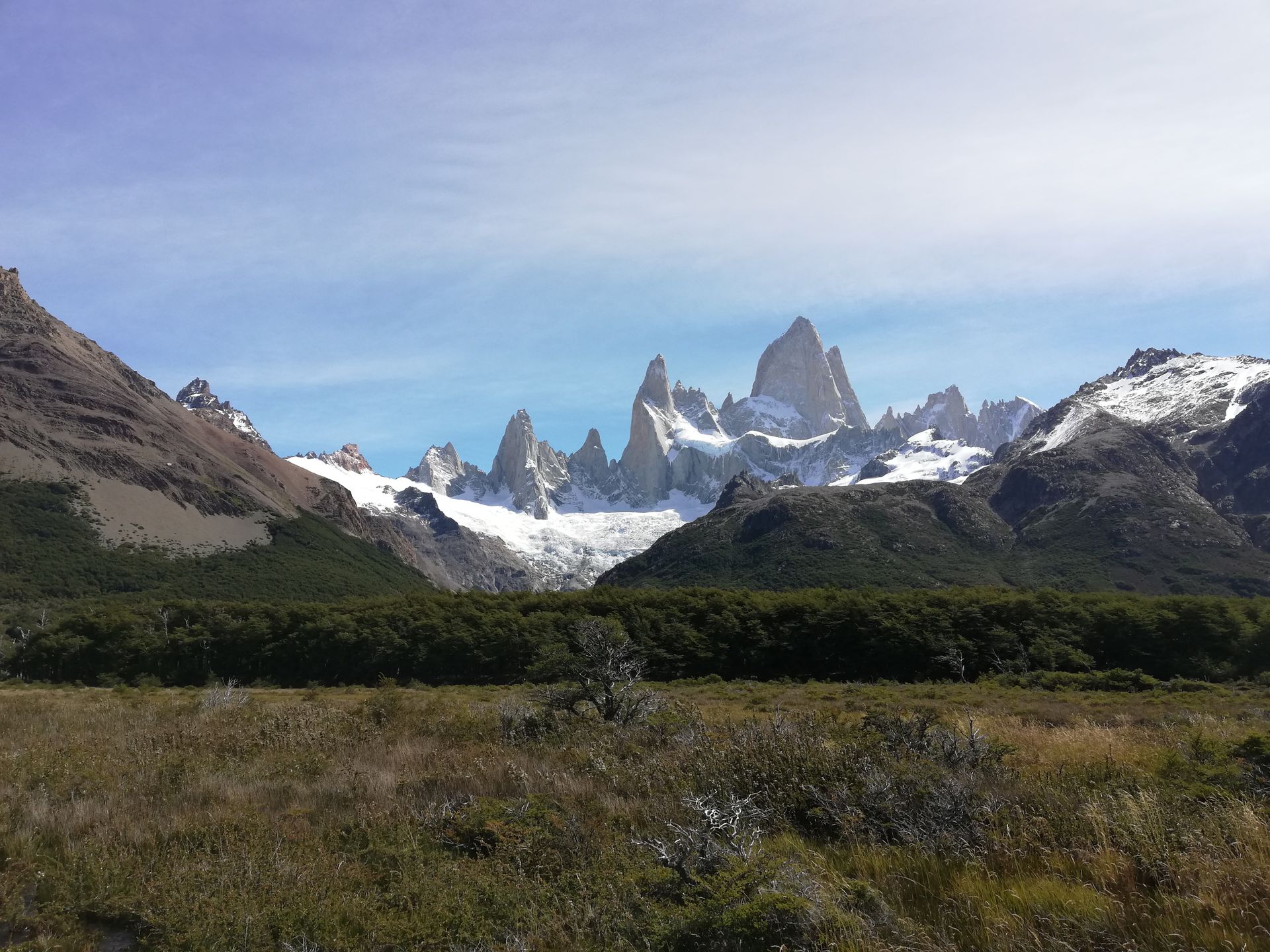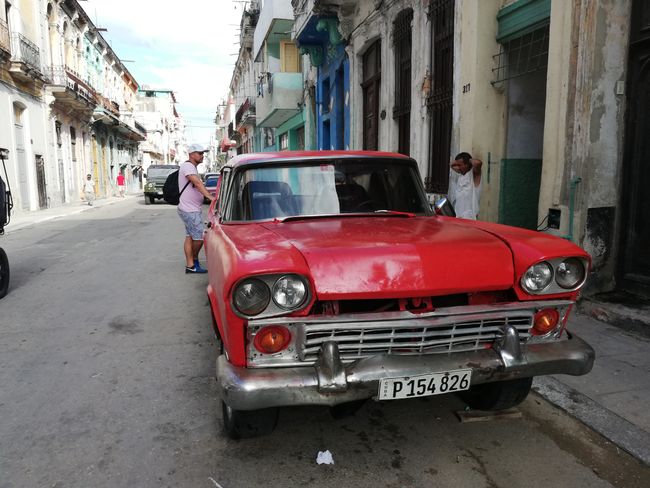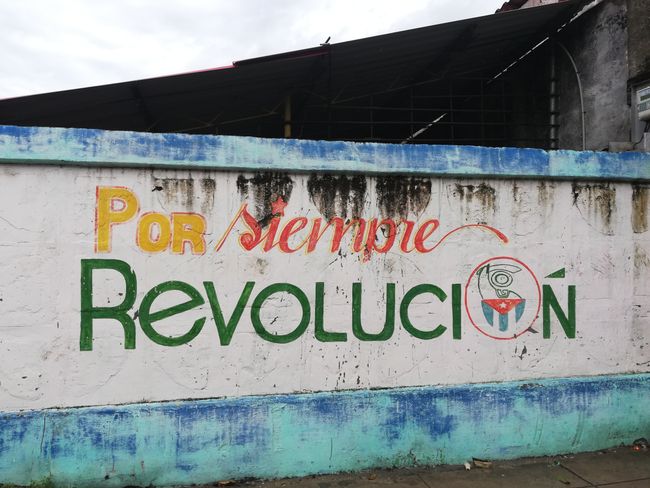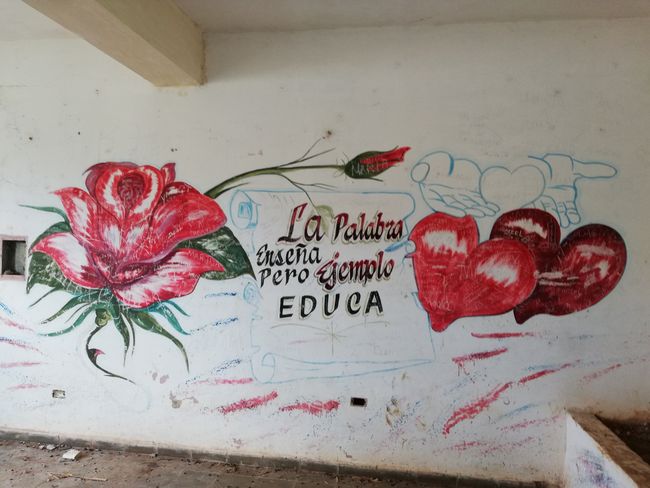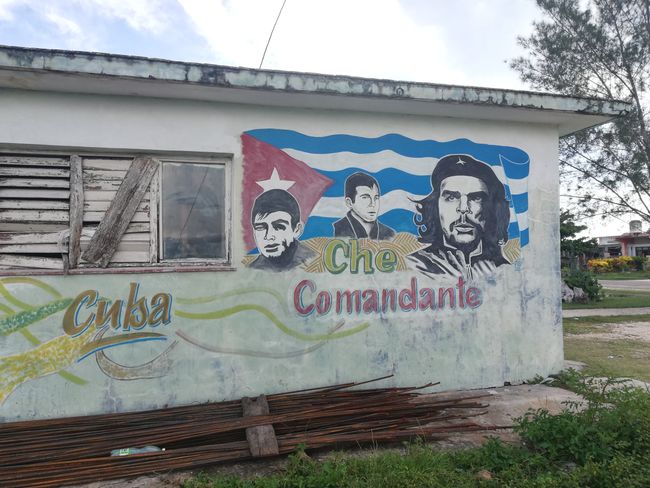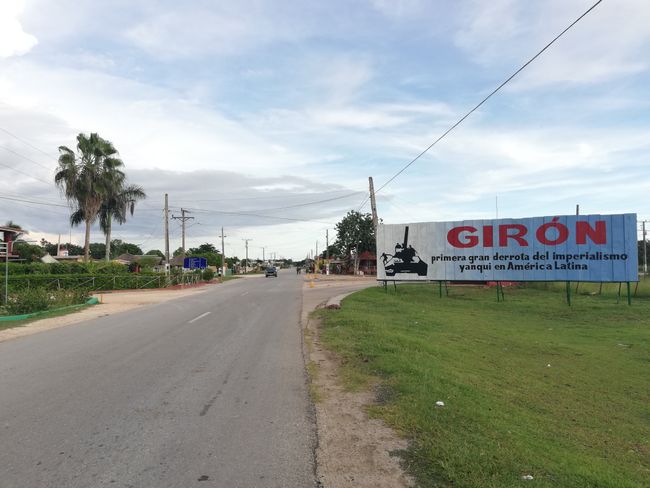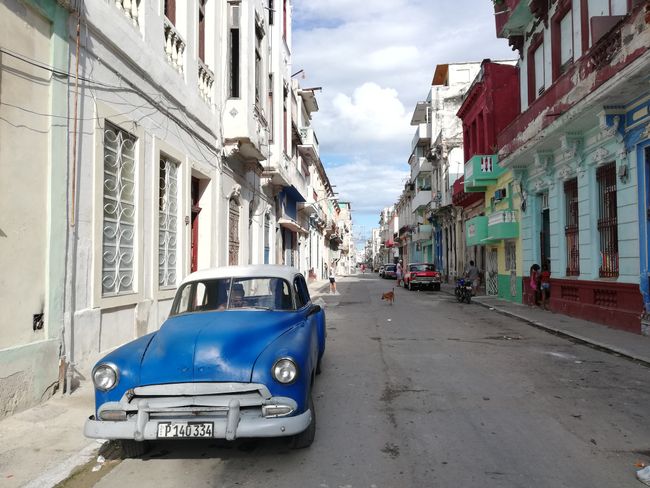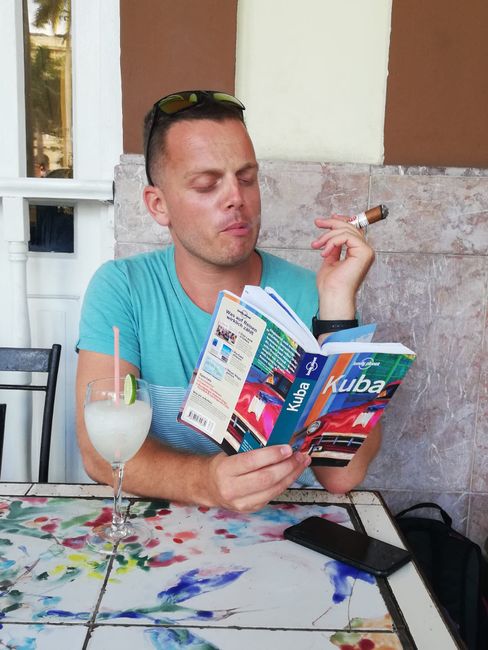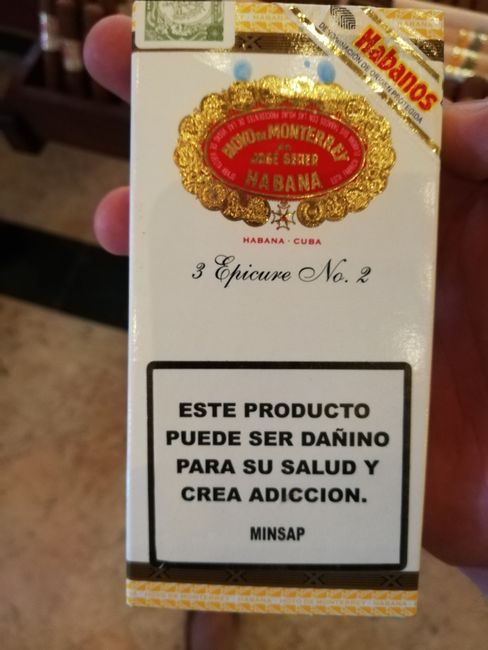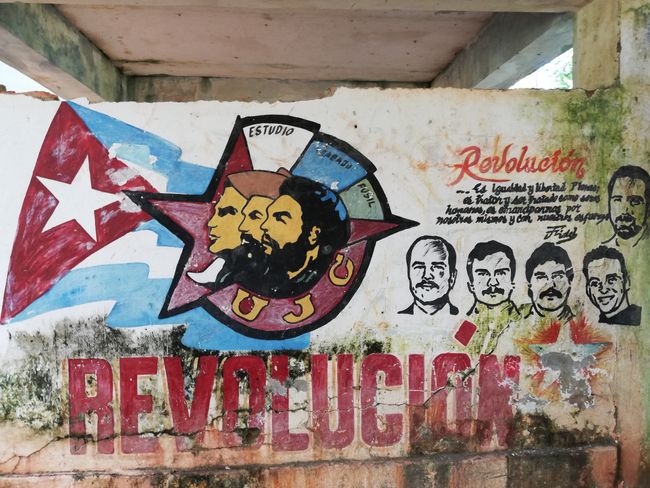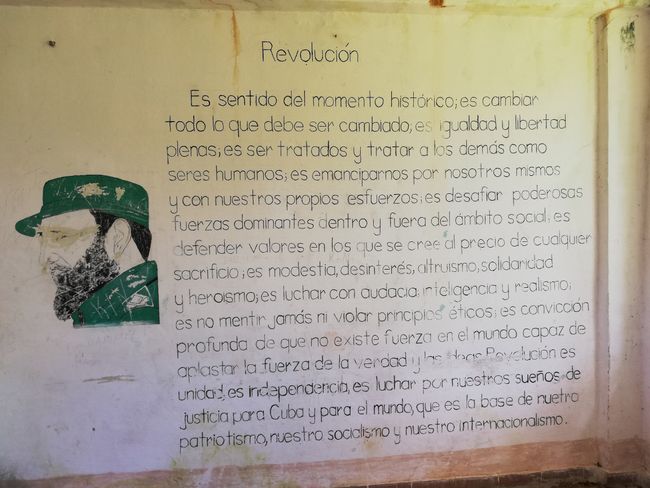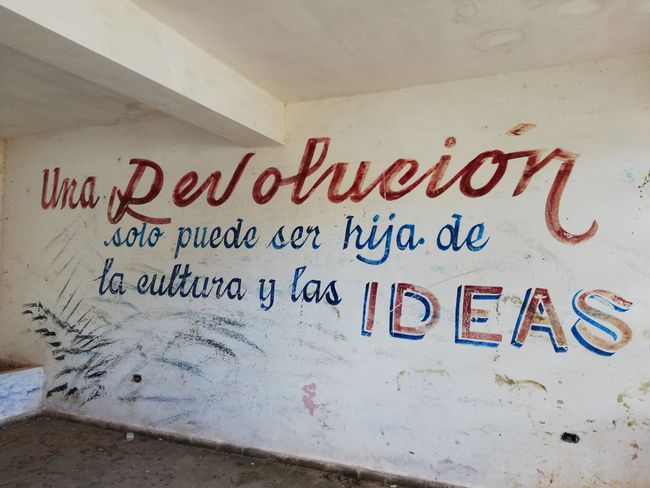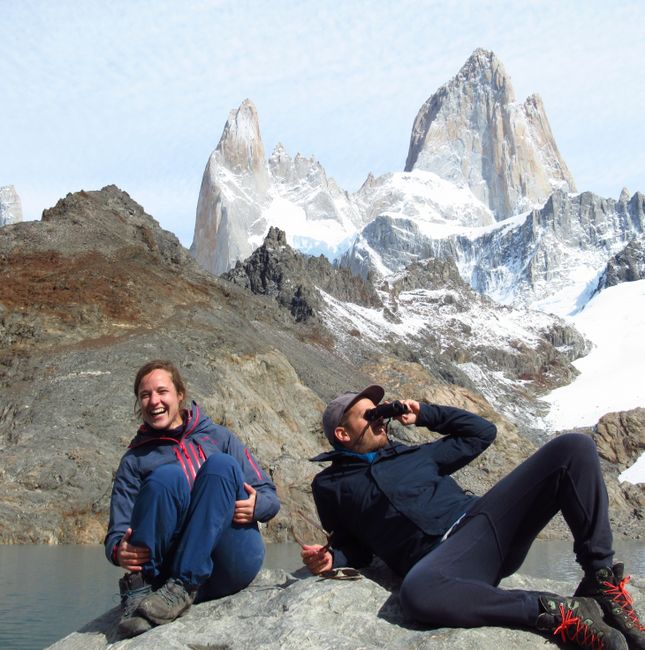
Reiseblog von Fabienne & Simon
vakantio.de/fabienneundsimonontour
S: The 'Myth' of Cuba
Wɔatintim: 14.10.2019
Kyerɛw wo din wɔ Newsletter no mu
When I think of Cuba, I associate it with Che Guevara, cigars, rum, and American vintage cars. This was my perception before arriving on the largest Caribbean island.
In order to scientifically explain the economic and political development of Cuba since the revolution in 1959 by Fidel, Che, and Co., an extensive analysis is needed, both internally and externally, in connection with the Cold War and the sanctions imposed by the USA. I would like to refrain from doing that and would gladly refer you to Wikipedia. :-)
After spending three and a half weeks in Cuba, I would now like to clarify my perceptions of the myth of Cuba: I have already gained insights into (former) communist countries such as Vietnam, China, and the former USSR states. However, the propaganda in Cuba surpasses them all. The main protagonists of Cuban propaganda are Fidel Castro ("Commandate en Jefe"), Ernesto Che Guevara ("El Commandante"), José Marti (martyr from the first revolution against the Spaniards at the end of the 19th century), and other revolutionary leaders. Their images and busts adorn schools, buses, gas stations, street signs, and museums. Although "La Revolucion" happened 60 years ago, the long-standing government of the Castro brothers still boasts about revolutionary ideals and achievements. It seems almost ironic to me that the revolutionary government is still in power today, wearing military uniforms, because in principle a revolution should not be a permanent state, but a transformation. In my opinion, Cuba has experienced very little of this transformation in the last 60 years. Apart from certain achievements that communism has brought here (which is displayed everywhere for propaganda purposes), such as literacy and equality, the country lags far behind the progress of the Western world. For tourists, this may be a reason to romanticize Cuba. What this means for the local population can be imagined. Although we have heard several times from locals that they are doing quite well and appreciate their country, the nature, and the mentality of the people here. Nevertheless, food as well as all other daily necessities such as electronics, toilet paper, umbrellas, etc. - I could go on and on with the list - are either not available or only in limited supply. Apart from rum and tobacco, Cuba has no significant industry. Everything has to be imported by the residents themselves. There is no H&M and no Media Markt. Cubans fly to neighboring countries such as Mexico or Panama to shop for hygiene products and electronics. Only the upper class, who earn their money from tourism, can afford this. It should be noted that the majority of the population does not have access to the Internet. One hour of internet here costs CUC 1 (= CHF 1). Given an average monthly salary of around CUC 25 from the state, this represents a large amount of money. Digitalization is a driving force behind shaping opinions. Free opinion formation is difficult in Cuba, especially since it is a one-party state, in addition to the lack of internet access, and people are indoctrinated from primary school that the only truth is the revolution, the people, Che Guevara, Fidel, etc. Cuba's banknotes are adorned with the faces already mentioned, as well as with the great achievements of the revolution that took place 60 years ago. On the 1-peso coin, the following saying is written: "Patria o Muerte" - Homeland or Death. We talked a little more extensively with two Cubans about their political views. Although both indirectly criticized the state a little, neither said anything directly negative about the government. Does this depend on indoctrination or fear of repression? It is probably a mix of both.
What's next for Cuba?
Although I was not here around the turn of the millennium, when the situation regarding supplies is said to have been more precarious, it seems that Cuba is also picking up speed. Tourism is flourishing. Foreign exchange flows into the country, increasing Cuba's purchasing power. However, Cuba could use more democracy, more digitization, and a little more capitalism. The entire myth of Cuba would then gradually disappear to the detriment of tourists, but for the benefit of the people.
Finally, a few words about the common stereotypes mentioned at the beginning:
Ernesto Che Guevara: He only received Cuban citizenship after the revolution and was originally a trained doctor from Rosario, Argentina. After the revolution, Che was installed in Castro's government, but he was not very successful and was even considered too "left-wing" by the government. However, as an idol and icon of the revolution, he is still the most seen face in Cuba, whether on banknotes, T-shirts, fridge magnets, etc.
Cigars: During my time in Cuba, I was able to save my snus supply and smoke cigars. Cohiba, Partagas, Romeo y Julieta, to name just a few well-known brands, are much cheaper here than in Switzerland. However, the cheapest cigars can be bought on the tobacco farms. The so-called "Puros" are hand-rolled on-site and cost me a maximum of CUC 1.5 per piece. All exporting cigar factories are state-owned.
Rum: Rum is the cheapest alcohol in Cuba. The most visible one: Havana Club. If there are no drinks available in most shops, there is always rum!
Oldtimers: Until the revolution in 1959, the USA was an important trading partner for Cuba. After the revolution and the subsequent nationalization of many American companies in Cuba, trade relations, as we know, collapsed. The import of vehicles was difficult, so the vehicles were not replaced but only repaired and restored. Nowadays, most vintage cars have Asian engines. What most people don't know is that there are more Russian Ladas than American vintage cars in Cuba. In addition to Ladas, Russian Moskvich and Volga cars also adorn the streets of Cuba.
Kyerɛw wo din wɔ Newsletter no mu
Anoyie (1)
Peter
Trotzdem: Viva la revolucion!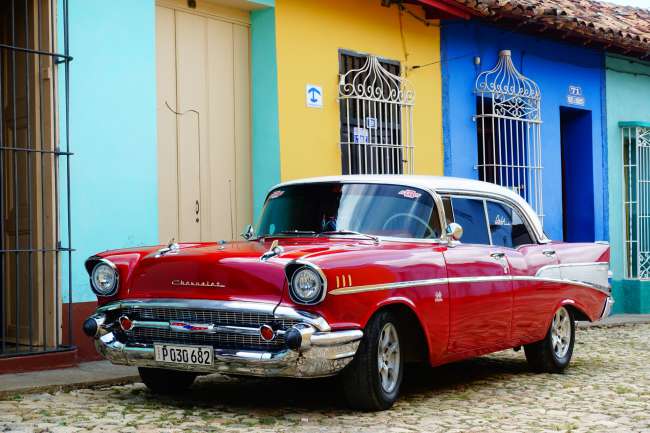
Akwantuo ho amanneɛbɔ Cuba
